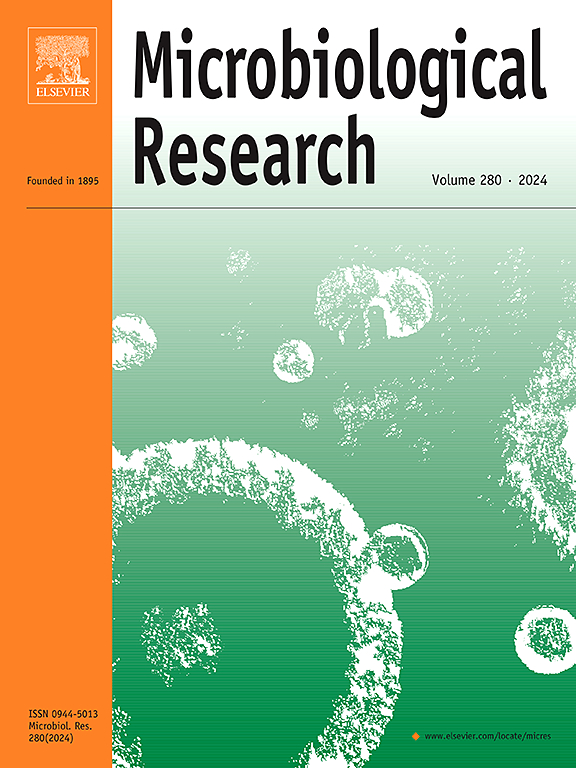Transcriptional memory drives accelerated re-activation of several biosynthetic gene clusters in Aspergillus nidulans.
IF 6.9
1区 生物学
Q1 MICROBIOLOGY
引用次数: 0
Abstract
Organisms are repeatedly exposed to fluctuating environmental and nutritional conditions. Transcriptional memory has been shown to be a mechanism to cope with these fluctuations because it increases the speed and the magnitude of the cellular response to a certain re-occurring condition and therefore optimizes adaptation and fitness in a given environment. We found that genes coding for sterigmatocystin (ST) production in Aspergillus nidulans are activated stronger when cells are repeatedly exposed to nutrient starvation, compared to cells that experience this condition for the first time. We studied possible underlying mechanisms and found that persistence of the transcription factor AflR, which can undergo activation-inactivation cycles, accounts for a large part of the memory. In addition, a chromatin-based mechanism through histone H3 lysine 4 dimethylation (H3K4me2) and extracellular metabolites produced during the first activation phase contribute to the memory process. Genome-wide transcriptome and chromatin analyses showed that only a few genes within the ST and other starvation-induced biosynthetic gene clusters gain the H3K4me2 mark during the 1st activation, but the majority of those which receive the mark also maintain it during the subsequent repression and re-activation phase. Combined with previous findings on chromatin-level regulation of biosynthetic gene clusters (BGCs) our recent data suggest that the H3K4me2 mark may contribute to the correct 3D organization of BGCs and that this is a prerequisite for activation and transcriptional memory.
转录记忆驱动黑曲霉中多个生物合成基因簇加速重新激活。
生物体反复暴露在波动的环境和营养条件下。转录记忆被证明是应对这些波动的一种机制,因为它能提高细胞对某种重复出现的条件做出反应的速度和幅度,从而优化在特定环境中的适应性和适应能力。我们发现,在黑曲霉(Aspergillus nidulans)中,当细胞反复暴露于营养饥饿时,与首次经历这种条件的细胞相比,编码生产固形胞囊素(ST)的基因被激活的程度更高。我们对可能的潜在机制进行了研究,发现转录因子 AflR 的持续存在(它可以经历激活-失活循环)在记忆中占了很大一部分。此外,通过组蛋白 H3 赖氨酸 4 二甲基化(H3K4me2)和细胞外代谢物产生的基于染色质的机制也有助于记忆过程。全基因组转录组和染色质分析表明,ST 和其他饥饿诱导的生物合成基因簇中只有少数基因在第一次激活期间获得了 H3K4me2 标记,但大多数获得标记的基因在随后的抑制和再激活阶段也保持了该标记。结合之前对生物合成基因簇(BGC)染色质水平调控的研究结果,我们最近的数据表明,H3K4me2 标记可能有助于生物合成基因簇的正确三维组织,而这是激活和转录记忆的先决条件。
本文章由计算机程序翻译,如有差异,请以英文原文为准。
求助全文
约1分钟内获得全文
求助全文
来源期刊

Microbiological research
生物-微生物学
CiteScore
10.90
自引率
6.00%
发文量
249
审稿时长
29 days
期刊介绍:
Microbiological Research is devoted to publishing reports on prokaryotic and eukaryotic microorganisms such as yeasts, fungi, bacteria, archaea, and protozoa. Research on interactions between pathogenic microorganisms and their environment or hosts are also covered.
 求助内容:
求助内容: 应助结果提醒方式:
应助结果提醒方式:


